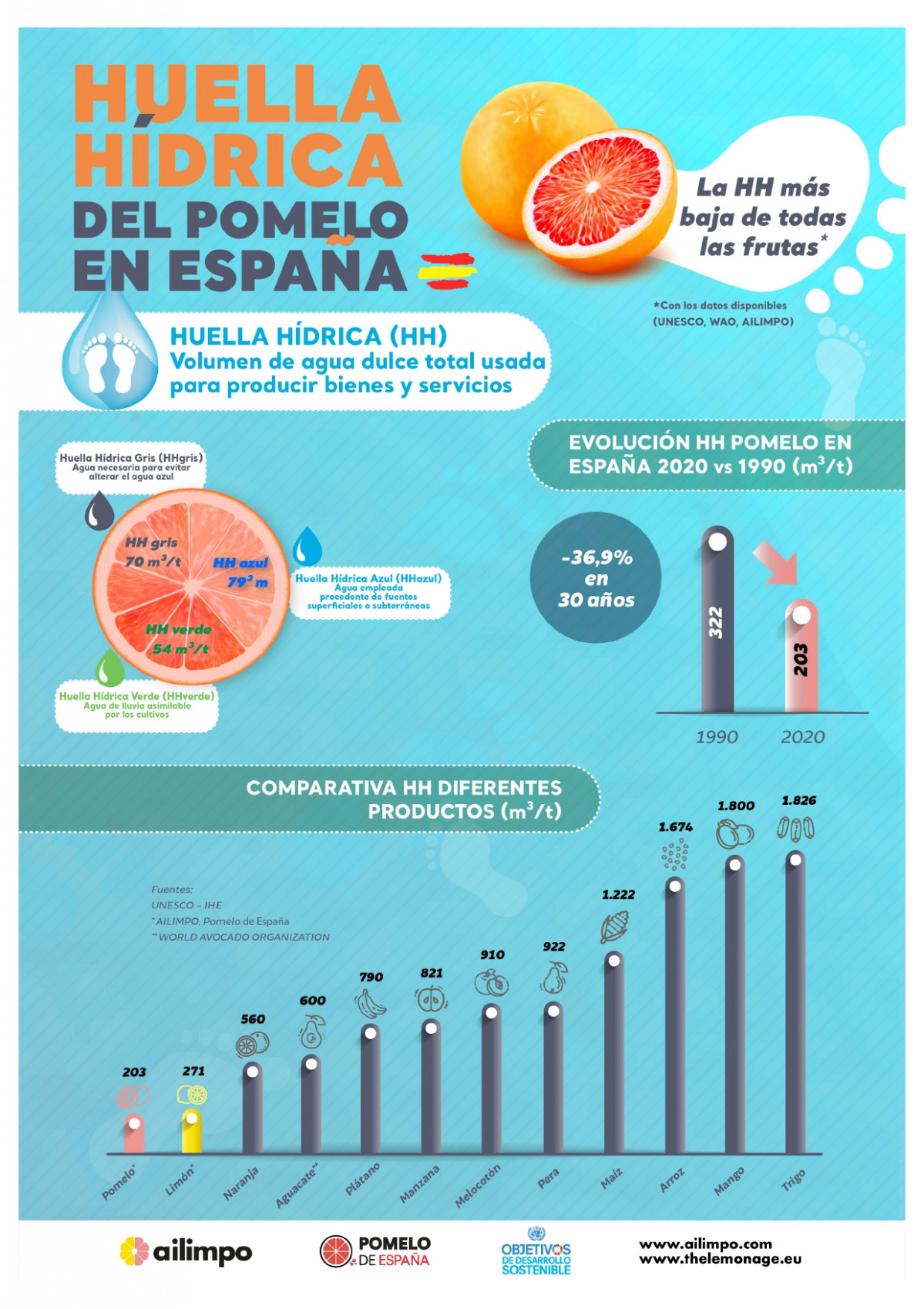Spanish grapefruit has managed to reduce its water footprint to 203 m3/ton, positioning itself as the fruit with the lowest water footprint among all those grown in the country, according to the report ‘Water footprint of grapefruit in Spain’ carried out by the Lemon and Grapefruit Interprofessional Association (Ailimpo).
Grapefruit cultivation is an example of the optimal use and management of water as a result of advances in irrigation and fertilization that have managed to increase the productivity of farms over the last 30 years, obtaining greater production per amount of water employee.
The calculation of the water footprint is part of Ailimpo’s sustainability policy in the environmental field, whose purpose is to align with points 6 and 12 of the Sustainable Development Goals (SDG) of the United Nations (UN), which are refer to guaranteeing the availability and sustainable management of water and sanitation for all people, as well as professing responsible consumption.
This innovative work carried out from the interprofessional has followed the methodology established by the Water Footprint Network (WFN), which is the world reference organization, offering information on the water footprint of grapefruit produced in Spain by province.
In addition, the data obtained has been compared to see its evolution in the last 30 years and contrast the footprint of grapefruit with respect to other fruits.
Thus, the report quantifies the water footprint of the grapefruit produced in Spain in about 203 m3/tons, with the blue HH being 79 m3/t, the green 54 m3/t and the gray 70 m3/t.
However, and despite the positive data contained in the aforementioned report, Spanish grapefruit producers continue to work to further reduce their water footprint, increasing investments in precision agriculture technologies to maximize productivity and minimize the use of water. water with techniques such as “the monitoring of water in the soil, the placement of mulch plastic in the crop lines, the covering of irrigation ponds or the reduction in the use of inputs, among others,” they indicated from Ailimpo.
–
–


